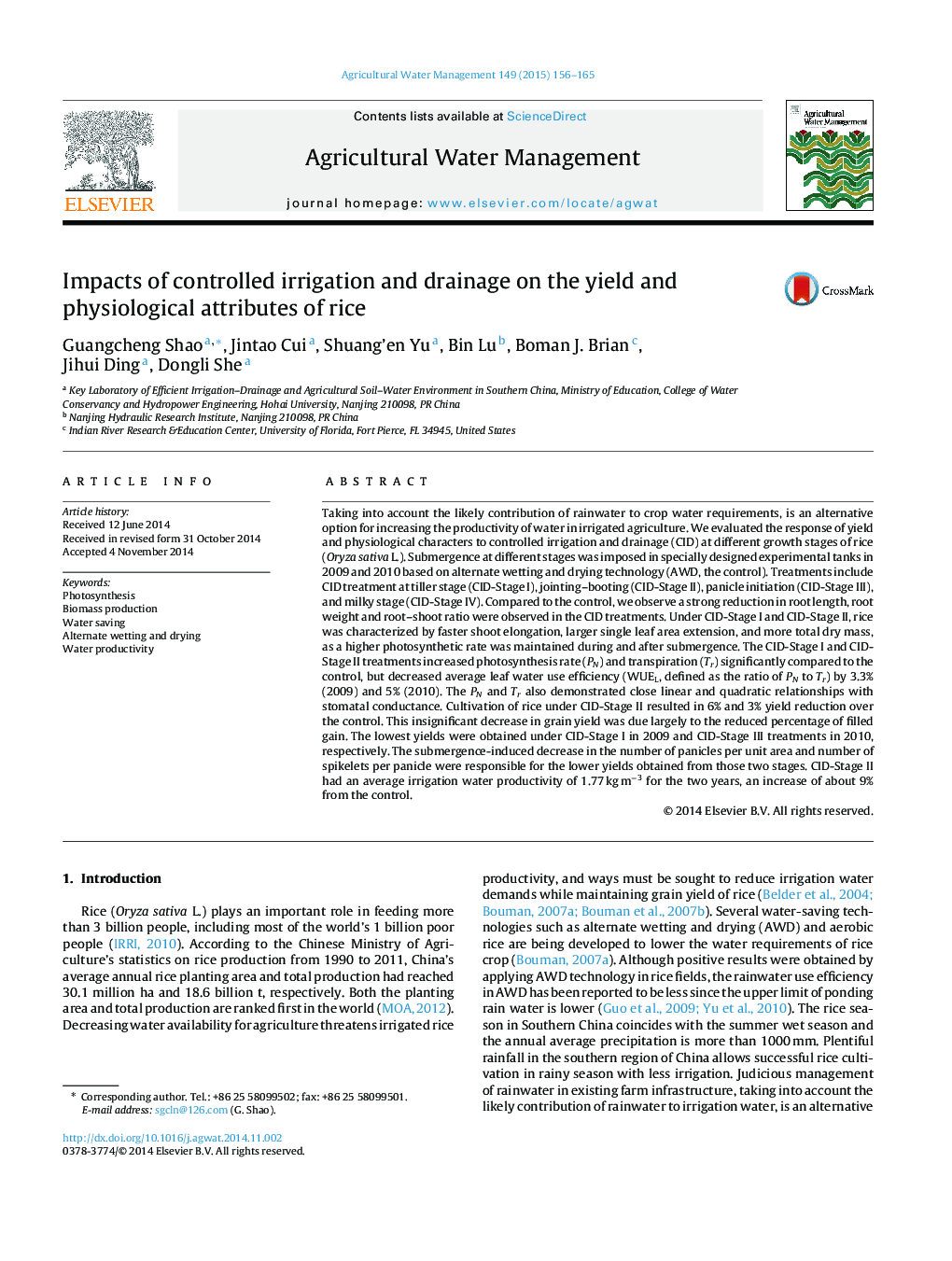| کد مقاله | کد نشریه | سال انتشار | مقاله انگلیسی | نسخه تمام متن |
|---|---|---|---|---|
| 6363884 | 1622930 | 2015 | 10 صفحه PDF | دانلود رایگان |
عنوان انگلیسی مقاله ISI
Impacts of controlled irrigation and drainage on the yield and physiological attributes of rice
ترجمه فارسی عنوان
تاثیر آبیاری و زهکشی کنترل شده بر عملکرد و ویژگی های فیزیولوژیکی برنج
دانلود مقاله + سفارش ترجمه
دانلود مقاله ISI انگلیسی
رایگان برای ایرانیان
کلمات کلیدی
فتوسنتز، تولید زیست توده، صرفه جویی در مصرف آب، مرطوب و خشک کردن جایگزین، بهره وری آب،
موضوعات مرتبط
علوم زیستی و بیوفناوری
علوم کشاورزی و بیولوژیک
علوم زراعت و اصلاح نباتات
چکیده انگلیسی
Taking into account the likely contribution of rainwater to crop water requirements, is an alternative option for increasing the productivity of water in irrigated agriculture. We evaluated the response of yield and physiological characters to controlled irrigation and drainage (CID) at different growth stages of rice (Oryza sativa L.). Submergence at different stages was imposed in specially designed experimental tanks in 2009 and 2010 based on alternate wetting and drying technology (AWD, the control). Treatments include CID treatment at tiller stage (CID-Stage I), jointing-booting (CID-Stage II), panicle initiation (CID-Stage III), and milky stage (CID-Stage IV). Compared to the control, we observe a strong reduction in root length, root weight and root-shoot ratio were observed in the CID treatments. Under CID-Stage I and CID-Stage II, rice was characterized by faster shoot elongation, larger single leaf area extension, and more total dry mass, as a higher photosynthetic rate was maintained during and after submergence. The CID-Stage I and CID-Stage II treatments increased photosynthesis rate (PN) and transpiration (Tr) significantly compared to the control, but decreased average leaf water use efficiency (WUEL, defined as the ratio of PN to Tr) by 3.3% (2009) and 5% (2010). The PN and Tr also demonstrated close linear and quadratic relationships with stomatal conductance. Cultivation of rice under CID-Stage II resulted in 6% and 3% yield reduction over the control. This insignificant decrease in grain yield was due largely to the reduced percentage of filled gain. The lowest yields were obtained under CID-Stage I in 2009 and CID-Stage III treatments in 2010, respectively. The submergence-induced decrease in the number of panicles per unit area and number of spikelets per panicle were responsible for the lower yields obtained from those two stages. CID-Stage II had an average irrigation water productivity of 1.77 kg mâ3 for the two years, an increase of about 9% from the control.
ناشر
Database: Elsevier - ScienceDirect (ساینس دایرکت)
Journal: Agricultural Water Management - Volume 149, February 2015, Pages 156-165
Journal: Agricultural Water Management - Volume 149, February 2015, Pages 156-165
نویسندگان
Guangcheng Shao, Jintao Cui, Shuang'en Yu, Bin Lu, Boman J. Brian, Jihui Ding, Dongli She,
